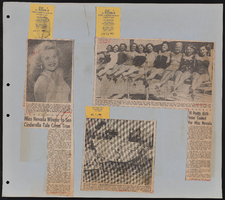Search the Special Collections and Archives Portal
Search Results
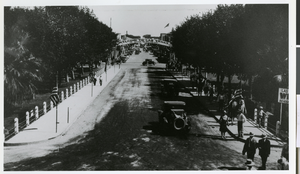
Photograph of a banner across Fremont Street, Las Vegas, June 23, 1919
Date
Archival Collection
Description
Image
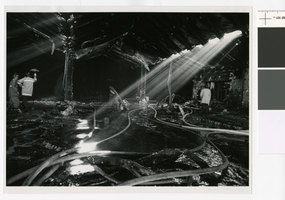
Photograph of the aftermath of the MGM Grand Hotel fire (Las Vegas), circa November, 1980
Date
Archival Collection
Description
Interior view of fire damaged MGM Grand. Stamp on back of photo: "R-J Photo by Scott Henry." The MGM Grand Hotel was re-built in 1981 and sold to Bally's Corporation to become Bally's Las Vegas in 1985.
Site Name: MGM Grand Hotel
Address: 3645 Las Vegas Boulevard South, Las Vegas, NV
Image
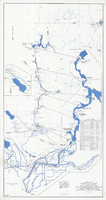
Map and operational diagram, lower Colorado River, Lees Ferry to Gulf of California, June 1973
Date
Description
Image
Reed, Walter
Possibly involved with mining claims in Colorado in the 1890s
Decision of the Department of the Interior and the General Land Office in Cases Relating to Public Lands, from January 1898 to May 1898. vol. XXVI, pages 485-487. https://books.google.com/books?id=kc9DAAAAIAAJ
Person
The Front Page, approximately 1927 to 1939
Level of Description
Scope and Contents
The Front Page sub-series (approximately 1927-1939) is comprised of materials pertaining to the production process of The Caddo Company's April 4, 1931 release of The Front Page. The sub-series contains advertising and publicity, administrative, financial, legal, and production and direction, and story development records. Director Lewis Milestone, along with editor Duncan Mansfield and writers Ben Hecht, Charles MacArthur, and Bartlett Cormack helped the film earn Academy Awards nominations for Best Director and Best Picture in 1929. The black-and-white photographic prints and negatives, primarily attributed to Newton Hopcroft, depict set and production stills of the principal and supporting cast and locations in the film.
Advertising and publicity records include newspaper clippings detailing the film’s release, articles of local advertising campaigns, and publicity stills of principal and supporting cast members. Administrative records include correspondence pertaining to the editing, censorship, and distribution of the film, as well as shipping receipts. Legal records include supporting actor and domestic distribution contracts. Production and direction records include production stills of principal and supporting cast, interior and exterior sets, and a sound and production daily report ledger. The story development records include production scripts, as well as cutting continuities and dialogue scripts for domestic and international releases.
Archival Collection
Collection Name: Howard Hughes Film Production Records
Box/Folder: N/A
Archival Component
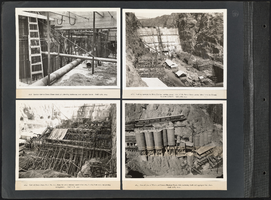
Warren A. Bechtel Album of Hoover Dam: photographic print
Date
Description
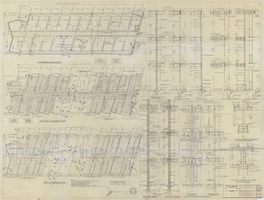
Architectural drawing of the Hacienda (Las Vegas), framing and foundations 900 Wing, 800 Wing similar but opposite hand, wall sections, August 5, 1957
Date
Archival Collection
Description
Plans for the construction of a 266 room addition for the Hacienda. Includes foundation and first floor plan, second and third floor framing plan, roof framing plan, interior and fire wall details.
Site Name: Hacienda
Address: 3590 Las Vegas Boulevard South
Image

Photographs of Harley Davidson Cafe signs, Las Vegas (Nev.), 2002
Date
Archival Collection
Description
Site address: 3725 S Las Vegas Blvd
Sign owner: Marc Packer
Sign details: Just north of the Tourist center the Harley Davidson cafe sits on the corner of Harmon and Las Vegas Blvd, facing west, with the corner pointing to the northwest. This properties exterior signage consists of two wall marquee wall signs on the west and north faces of the building, a small hanging sign above the entrance, a tall north/south facing pylon sign on the south end of the concrete courtyard that comprises the front of the property. A giant three-dimensional sculpture of a Harley Davidson motorcycle is integrated into the structure of the building to appear as if it is bursting out of the northwest corner of the building. Above the motorcycle is a marquee cabinet advertising for the cafe.
Sign condition: Structure 5 Surface 5 Lighting 5 Notes: See description
Sign form: Pylon; Fascia
Sign-specific description: On the west and north faces of the building, "Harley Davidson Cafe" is spelled in a continuous channel design, only being interrupted by the break between the rest of the text and the word "Cafe." This text is supported by a sleek, black, steel cabinet, that mimics the style of font used for the logo. The letters are crafted of red, shallow, steel channel letters, with white neon around the border as well as red neon on the interior. Standing on the South end of the property the pylon sign is reminiscent of old roadside pole signs, for it is mostly pole. The faceted pole is finished in polished stainless steel giving it highly metallic finish. At the top of the sign a sculpted marquee cabinet holds the advertisement for the cafe. The top portion of the cabinet is the Harley Davidson text logo, supported by an inverted triangle shape, with two lengths running along the underside of the text. The design for the letters is the same as that found on the buildings wall signs with white neon outlining the text, with red neon on the interior. The cabinet itself, without the text, is bordered with red neon, illuminating the highly polished surface of the cabinet. Underneath the Harley Davidson text on the outstretched arms the text "Las Vegas" is spelled in small, black, channel letters with white neon on the interior. Inside the inverted triangle shape created by the cabinet, is another inverted red triangle created by an open channel pan. Cutting across the triangle is channel letters, which spell the word "cafe" painted white on the interior. This text is filled with white neon. The pole continues above the cabinet a short distance. Along the length of the pole, "V" shaped channels repeat, forming a sort of directional sign pointing toward the ground. The channels are filled with tubes of red neon. These chase each other downward pointing toward the plaza and a small blurb of text painted at eye level in red paint. The phrase reads "The best BBQ in Las Vegas," in all caps. The text is then overlaid with red neon. The cabinet on the top of the pylon is repeated over the giant replica motorcycle, facing northwest, upon the northwest face of the wall. The neon scheme is the same as the pylon sign but the "cafe text" is filled with incandescent bulbs. Beneath the motorcycle, and directly over the door, a small back-lit version of the northwest wall above head height.
Sign - type of display: Neon; Incandescent; Backlit
Sign - media: Steel
Sign - non-neon treatments: Graphics
Sign animation: Chasing, flashing, oscillating
Notes: The incandescent bulbs inside the text reading "Paris" on the balloon oscillate rapidly.
Sign environment: Harmon and Las Vegas Boulevard plays host to the Aladdin, which includes the Blue Note jazz and blues club. The Harley Davidson Cafe's sun drenched patio creates the west facade while it stretches east down Harmon to face the Blue Note. This orientation actually creates an intimate feel to the street, seemingly separated from the strip.
Sign manufacturer: Mikhon Lighting and Sign
Sign designer: Roger Pratt
Sign - date of installation: 1999
Sign - thematic influences: The theme of the exterior revolves around the design of the Harley Davidson motorcycle. The slightly italicized Impact text is reminiscent of the text seen on the motorcycles' fuselages. The vertical pylon sign is clearly influenced by roadside, marquee pylon signs, treated in a material also reminiscent of the steel beasts. The exposed metal exterior of the poles can only be associated with the aesthetic so commonly associated with the vehicles.
Sign - artistic significance: Similar to properties that are representative of everyday establishments such as McDonald's and Walgreen's, the Harley Davidson is representative of the themed restaurant, catered to a family environment. It too is an everyday occurrence, of a cafe, dressed with a theme to attract patrons, as well as survive and fit it in the context Las Vegas Blvd Even though the themed restaurant is a popular idea abroad, The Harley Davidson fits in with its partners in the themed cafe industry such as the NASCAR Cafe and Planet Hollywood. Many restaurants among the casinos are themed but, there are only a few that are independently represented with their own signage. The giant replica of the Harley Davidson is also in the tradition of other giant Casino mascots throughout local history. Such mascots could include The Coin King, Mr. O' Lucky, and the original Aladdin sculpture.
Surveyor: Joshua Cannaday
Survey - date completed: 2002
Sign keywords: Chasing; Flashing; Oscillating; Pylon; Fascia; Neon; Incandescent; Backlit; Steel; Graphics
Mixed Content


